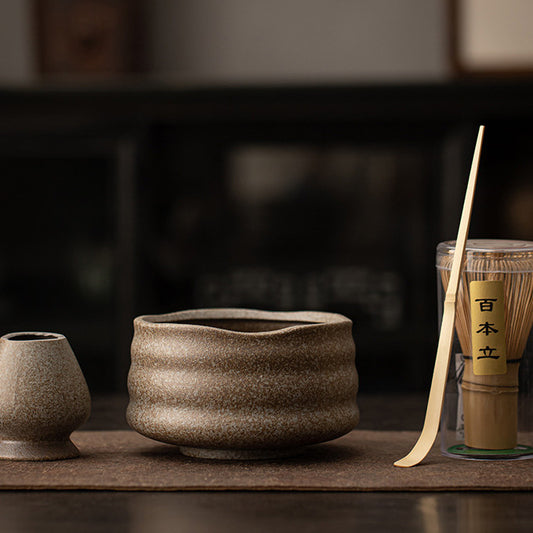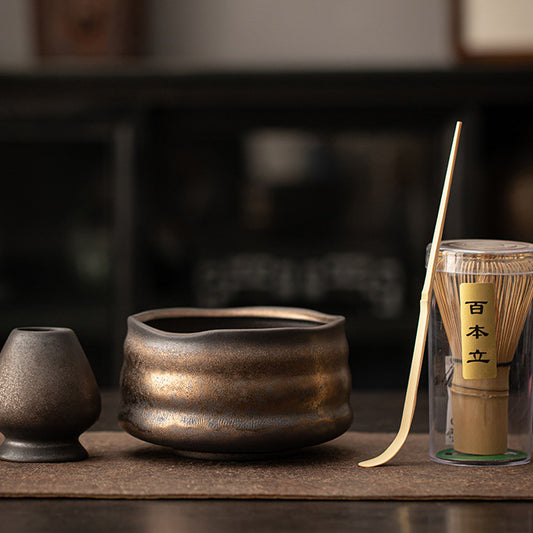As the weather warms up, there's nothing quite as refreshing as a chilled glass of Japanese cold tea. Whether you're cooling down after a hot day or simply enjoying a moment of relaxation, Japanese cold teas offer a delightful way to stay hydrated and refreshed. What's truly fascinating is how each pitcher of cold tea is unique, reflecting the tastes and traditions of each household. Join me as we explore the art of making Japanese cold teas and discover how this simple tradition can be personalized to create a uniquely refreshing experience.
The Tradition of Japanese Cold Teas
Japanese cold teas, also known as "mizudashi" (cold-brewed) teas, have been enjoyed for centuries. These teas are not only delicious but also easy to prepare and packed with health benefits. The tradition of making cold teas varies from home to home, with each family adding their own unique twist to the process.
Popular Types of Japanese Cold Teas
There are several types of Japanese teas that are commonly enjoyed cold. Here are a few favorites and how to prepare them:
1. Cold-Brew Sencha
Sencha is a popular green tea known for its refreshing, grassy flavor. Cold-brewing sencha brings out its natural sweetness and minimizes bitterness.
How to Make:
- Measure the tea: Use about 1 tablespoon of sencha leaves per liter of water.
- Add cold water: Place the tea leaves in a pitcher and add cold water.
- Steep: Let the tea steep in the refrigerator for 3-6 hours. The longer it steeps, the stronger the flavor.
- Strain and serve: Strain the tea leaves and pour the tea over ice. Enjoy the crisp, refreshing taste.
2. Cold-Brew Hojicha
Hojicha is a roasted green tea with a warm, toasty flavor. Cold-brewing hojicha gives it a unique, mellow taste that's perfect for hot days.
How to Make:
- Measure the tea: Use about 1 tablespoon of hojicha leaves per liter of water.
- Add cold water: Place the tea leaves in a pitcher and add cold water.
- Steep: Let the tea steep in the refrigerator for 6-8 hours.
- Strain and serve: Strain the tea leaves and serve over ice. Enjoy the nutty, roasted flavor.
3. Cold-Brew Genmaicha
Genmaicha combines green tea with roasted brown rice, offering a nutty, savory flavor. Cold-brewing genmaicha creates a refreshing drink with a hint of roasted sweetness.
How to Make:
- Measure the tea: Use about 1 tablespoon of genmaicha leaves per liter of water.
- Add cold water: Place the tea leaves in a pitcher and add cold water.
- Steep: Let the tea steep in the refrigerator for 3-6 hours.
- Strain and serve: Strain the tea leaves and serve over ice. Enjoy the unique combination of flavors.
Personalizing Your Cold Tea
The beauty of Japanese cold teas lies in their versatility and the ability to personalize each pitcher. Here are some ways to make your cold tea uniquely yours:
1. Experiment with Tea Blends
Mixing different types of tea can create a unique flavor profile. Try blending sencha with a bit of matcha powder for a vibrant, green tea boost, or combine hojicha with a touch of genmaicha for a rich, roasted flavor.
2. Add Fresh Ingredients
Enhance your cold tea with fresh ingredients like lemon slices, mint leaves, or ginger. These additions can bring a refreshing twist to your tea and add an extra layer of flavor.
3. Sweeten to Taste
While traditional Japanese cold teas are enjoyed without added sweeteners, you can customize your tea by adding a bit of honey, agave syrup, or simple syrup. Sweetening your tea can balance the natural bitterness and create a more rounded flavor.
4. Infuse with Fruits
Adding fruits like strawberries, peaches, or citrus slices can infuse your tea with subtle, fruity notes. Place the fruit in the pitcher along with the tea leaves and let it steep together for a refreshing, fruity twist.
The Unique Touch of Each Household
In Japan, each household has its own way of preparing and enjoying cold tea. Some may prefer a stronger brew, while others like it milder. The choice of tea leaves, the length of steeping time, and any additional ingredients all contribute to making each pitcher of cold tea unique.
Families often pass down their cold tea recipes through generations, adding a personal touch to this simple tradition. Whether it’s a secret blend of teas or a special ingredient that makes the tea extra refreshing, these unique touches make Japanese cold tea a cherished part of home life.
Conclusion: Embrace the Refreshing Tradition of Cold Tea
Japanese cold teas offer a delicious and hydrating way to enjoy the flavors of traditional teas in a refreshing, chilled format. By experimenting with different types of tea and personalizing your brew, you can create a unique and enjoyable tea experience that reflects your tastes and traditions.
So, the next time you’re looking for a cool, refreshing drink, try making a pitcher of Japanese cold tea. Whether you stick to the classics or add your own special twist, you’ll be embracing a tradition that’s as enjoyable as it is refreshing. Cheers to finding peace and refreshment in a perfect cup of cold tea!




